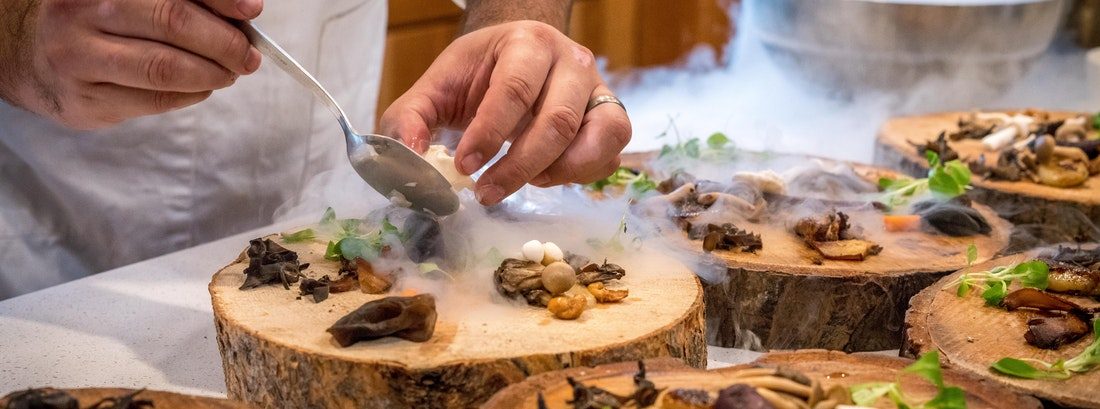Floribbean Cuisine – The Taste of Miami

Floribbean food is a unique blend of Floridian, Caribbean, African and Asian cuisine that is unlike any other fusion of food found in America. With an emphasis on ripe and local produce, fresh-squeezed citrus juices, impressive blends of spices, and seafood and poultry, the elements of Floribbean cuisine that distinguish it from other styles make for an exciting history lesson as well as a fabulous culinary experience.
If you love food and crave the unusual, go on holiday to Miami and eat your way through a wealth of festive American history that has been preserved on the plate.
A History of People and Tastes
Florida is the state whose southern edges dip farthest into the Atlantic Ocean, making it an unusual East Coast U.S. tropical paradise. Its first settlers were Native American tribes who hunted and fished and relied heavily on wildlife, as well as nuts and berries, for their sustenance. When the Spanish came to the region at the beginning of the 16th century, the beginnings of Florida’s food fusion began. More and more European explorers came to Florida, and the food continually shifted, reflecting the people.
Not long after the Spanish, the first African slaves were brought to Florida and the surrounding islands. The dishes that were already being prepared — Spanish, Dutch, French, Island, Native American and more — all became new again as African spices, ingredients and preparatory practices became common. The area’s native edible plants and fish continued to affect the development of cooking and taste as well. Guava, seafood, wild ginger, key limes, conch — all of these and more were incorporated into the already diverse culinary tastes and styles of South Florida and the Caribbean.
In the middle of the 18th century, a group of Mediterranean immigrants called the Minorcans settled in St. Augustine, Fla. As they spread beyond their original settlement and intermarried, they carried their traditions and cooking methods with them. A century later, the centuries-long slave trade ended and tens of thousands of slaves were freed, opening up a huge work vacuum that was filled by Asian immigrants. Of course, all of them brought their own methods, ingredients and predilections to bear in the kitchen.
The beginning of the 20th century saw a large influx of Jewish immigrants to the area, which added to the region’s culinary heritage and taste, while occasionally borrowing from it as well. Toward the middle and end of the 20th century, Cuban refugees found their way to Miami and South Florida, and they certainly influenced palates and preferences, both in style and presentation as well as ingredients.
Over the centuries, the various islands of the Caribbean and the Bahamas played a major role in how Floribbean cuisine, and Floridian culture, developed. Now at the start of the 21st century, the culinary offerings in Miami and the surrounding region have galvanized into something that can be found in no other place — even in the U.S. Lemongrass, red curry, grits, lime, mango, seafood of all kinds, black beans, olive oil, allspice, fennel, chicken in all sorts of different manifestations, oregano and ginger — it all comes together to form the taste and feeling of what it’s like to be in Miami.
Prep and Presentation
One thing that makes Floribbean cuisine such a delight is the knowledge that it cannot be properly experienced anywhere else but within that region. Because the development of those flavour combinations and their methods of cooking has been so historically dependent on the vast array of people groups and the foods and spices they revered, in addition to the vegetables, fruit, meats and spices native to South Florida, even finding out the names of every ingredient — let alone locating them at your local market — is unlikely.
Beyond its historical development and the plethora of ingredients from which it is made, Floribbean food is also presented in a very specific way that enhances an eater’s experience as much as the exotic spices and perfectly grilled meats do. Instead of lush and complex presentations, dishes are decorated in as natural a way as possible, with the dictates of presentation still giving way to the primary concerns of good, fresh taste. Various greens, herbs and spices give dishes a healthy, fecund look. Garnishes are eaten, and any purees or sauces on the plate are not there primarily for colour. While the colours can be dense, rich and pleasing, taste is king in everything Floribbean.
Miami’s heritage is one that is rich with people from around the globe. Take a bite of its world-renowned cuisine and experience those people’s history for what it is: a time capsule and a fusion, delicious in every dish.
Posted on: October 17, 2013
By admin
